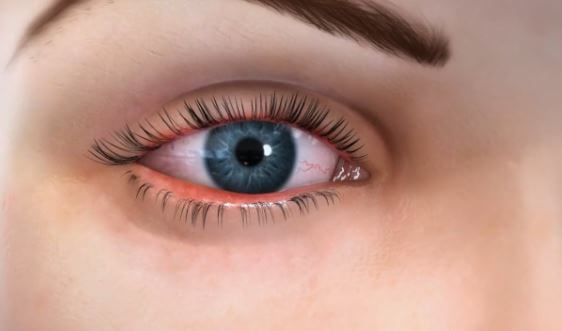Dry eye syndrome, or dry eye, is an eye disorder that is very common today. It can be isolated, or be a symptom of eye disease or not. The symptoms are often characteristic and require, among other things, daily use of tear substitutes. In some cases, other treatments may be needed to manage the cause of dry eye syndrome.
Causes of Dry Eye Syndrome
The dry eye can have different causes:
- Normal aging of the lacrimal gland, aggravated by the drop in hormonal impregnation after menopause in women and andropause in men;
- Prolonged use of certain medications with the side effect of decreasing the secretion of tears :
- Antidepressants;
- Neuroleptics;
- Morphine analgesics;
- Antihistamines;
- Anti-acne drugs;
- Anti-diarrheal drugs;
- Beta-blockers;
- Hormonal treatments;
- The consumption of tobacco or cannabis;
- Wearing of contact lenses;
- Vitamin A deficiency, especially in developing countries;
- The intense use of computers, which reduces the natural blinking of the eyes;
- Laser eye surgery (temporary dry eye);
- Some diseases, which are accompanied by a dry syndrome, including the dry eye syndrome :
- Autoimmune diseases such as rheumatoid arthritis, the lupus erythematosus or syndrome Sjögren ;
- Diseases causing inflammation of the eyelids, such as rosacea, seborrheic dermatitis, psoriasis or chronic eye allergies;
- General diseases, such as hepatitis C, some forms of cirrhosis or sarcoidosis (systemic inflammatory disease).
Diagnosis of dry eye syndrome
First, it is important to note that experiencing dry eye symptoms does not necessarily mean dry eye syndrome. These symptoms can only result from living conditions favorable to drying out, the secretion of tears remaining normal. Similarly, dry eye syndrome should not be confused with allergic conjunctivitis or eye infection.
The precise diagnosis of dry eye syndrome and its origin is therefore essential to adapt the management and effectively relieve the person. Taking certain medications may lead to an iatrogenic origin of ocular symptoms.
After having collected the clinical signs suggestive of dry eye, the doctor can perform various specific examinations to establish the diagnosis of dry eye syndrome:
- Break-Up Time (BUT) examination (or measurement of tear film tear time) and fluorescein uptake to assess tear secretion by the tear glands;
- Examination with lissamine green or rose bengal to analyze the ocular surface and the tear film;
- A Schirmer test, which consists of placing small strips of blotting paper at the level of the lacrimal sacs;
- The conjunctival impression, looking for a decrease in the number of mucous cells.
These exams allow the doctor to evaluate the functioning of the lacrimal glands and to estimate the suffering of the eye cells. If the patient also complains of dry mouth, other tests may be prescribed to look for possible Sjogren’s syndrome.Estrogen Body Cream
Prevent dry eye
While tear substitutes can help relieve the signs of dry eye, a few simple actions can be adopted daily by all those who suffer from dry eye syndrome related to their environment, which is to say without real mechanism pathological condition. These few measures are also beneficial for patients suffering from dry eye disease related to pathology.
These actions include the following:
- Do not overheat the indoor environment and humidify the rooms;
- Avoid the use of air conditioning;
- Limit as far as possible the use of drugs with the side effect of dry eye ;
- Limit exposure to pollution, chemicals or tobacco;
- Protect yourself from the wind and the sun by wearing appropriate glasses;
- Take breaks regularly when working on screen and regularly force yourself to blink;
- Follow the advice for the use and maintenance of contact lenses;
- Wash your hands thoroughly before touching your eyes.







